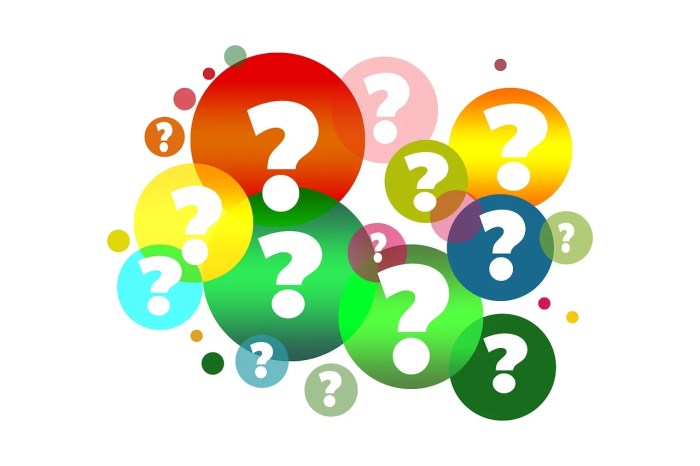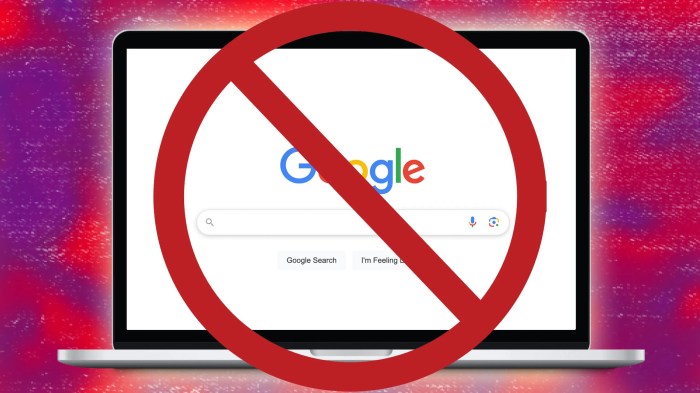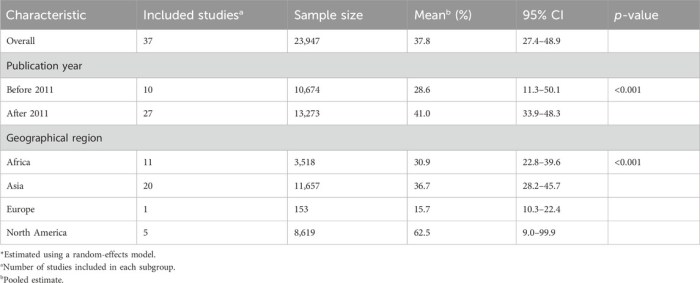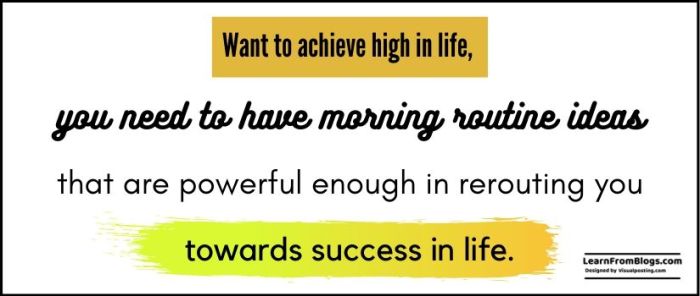Ultimate way inbox zero isn’t just about clearing your email inbox; it’s about reclaiming your time and focus. This guide delves into the strategies, tools, and practical applications to achieve a truly efficient and stress-free inbox management system, whether in your personal or professional life.
We’ll explore the core principles of inbox zero, from defining it to implementing effective strategies and leveraging various tools. You’ll discover how to manage incoming emails, prioritize tasks, and process them quickly. We’ll cover different email management methodologies and tools, and compare their pros and cons, helping you choose the perfect approach for your needs. We’ll also go beyond email, showing how these principles can be applied to other areas of your life, from managing projects to organizing your daily routines.
Defining Inbox Zero
Inbox Zero, a seemingly simple concept, embodies a profound philosophy of email management. It’s not just about emptying your inbox; it’s about reclaiming your time and focus by transforming your relationship with email. It’s a strategy that goes beyond mere efficiency, aiming for a state of mental clarity and reduced stress related to email overload.The core idea is to process incoming emails as quickly as possible, either responding, filing, deleting, or deferring them to appropriate actions.
This proactive approach prevents emails from accumulating and overwhelming the user, leading to a more organized and productive workflow. It encourages a mindful approach to email, prioritizing tasks and fostering a sense of control over one’s communication.
Comprehensive Definition of Inbox Zero
Inbox Zero is a method of email management that strives to maintain a perpetually empty inbox. This entails promptly addressing incoming emails, archiving or deleting them based on their importance and urgency, and implementing processes for efficient task management related to the emails. It’s a holistic approach that aims to reduce the mental clutter and stress associated with a constantly overflowing inbox.
Core Principles of Inbox Zero
Several key principles underpin the Inbox Zero philosophy. These principles are not rigid rules but rather guiding guidelines for a more efficient email workflow. They include:
- Proactive Processing: Instead of passively waiting for emails to pile up, Inbox Zero emphasizes actively processing each message as it arrives. This proactive approach prevents emails from accumulating, reducing the feeling of being overwhelmed.
- Categorization and Filing: Emails are categorized or filed based on their importance and action required. This ensures that relevant emails are easily accessible and that tasks associated with them are efficiently tracked.
- Prioritization and Delegation: Urgent and important emails are prioritized, and tasks are delegated if necessary to maintain a manageable workload. This helps maintain a healthy balance between email management and other tasks.
- Automation and Tools: Utilizing email management tools, automation, and other relevant technologies streamlines the process and increases efficiency.
Different Perspectives on Inbox Zero
Different individuals and organizations have varying interpretations of Inbox Zero. Some view it as a strict adherence to an empty inbox at all times, while others see it as a more flexible approach to email management. Some interpretations may involve:
- Strict adherence to the principle: This viewpoint necessitates an empty inbox at all times, demanding prompt action on every email.
- Flexible approach: This view emphasizes the efficiency and organization benefits without strict adherence to an empty inbox at all times. It acknowledges the realities of email volume and allows for exceptions.
- Strategic inbox management: This focuses on strategically using the inbox as a task list or reminder system, enabling users to manage and organize tasks in one place.
Email Management Methodologies for Inbox Zero
The table below compares and contrasts different email management methodologies related to achieving Inbox Zero.
Achieving inbox zero is a constant quest, but a crucial aspect often overlooked is employee recognition. Companies like those highlighted in this article, like 5 companies who understand that employees deserve recognition , demonstrate how fostering a culture of appreciation directly impacts productivity and overall team morale. This positive atmosphere ultimately contributes to a more streamlined workflow, which in turn makes conquering inbox zero that much easier.
| Method | Key Principles | Advantages | Disadvantages |
|---|---|---|---|
| The “Clean Slate” Method | Process all emails immediately, categorizing and filing them. | Immediate clarity, reduced mental clutter. | Potentially overwhelming, can be inefficient for high volume. |
| The “Batch Processing” Method | Process emails in batches at specific times, focusing on specific actions. | Reduces the stress of constant processing, better for large volumes. | Potential for delays in responding, might miss urgent messages. |
| The “Categorization and Filing” Method | Organize emails into specific folders or categories based on type, project, or recipient. | Improved organization, easy access to specific information. | Can become cumbersome if not properly managed, might lead to lost emails if categories aren’t clear. |
Strategies for Achieving Inbox Zero
Inbox Zero isn’t just about an empty inbox; it’s a philosophy of email management that frees you from the constant pressure of unread messages. Effective strategies for Inbox Zero go beyond simply deleting emails; they involve proactive systems for processing, prioritizing, and categorizing incoming correspondence. This approach allows you to focus on important tasks and reduces the overwhelming feeling of email clutter.Email overload is a common problem, impacting productivity and mental well-being.
Mastering the “ultimate way inbox zero” is more than just deleting emails; it’s about managing your mental load. This often means confronting underlying anxieties and inefficiencies. Thinking about how you approach your workload, like in a therapeutic sense, can be insightful. For example, check out this fascinating article on 10 things your therapist won’t tell you but wants you to know 10 things your therapist won’t tell you but wants you to know to understand how to tackle procrastination and emotional baggage related to your inbox.
Ultimately, the best approach to inbox zero involves recognizing the mental blockages that prevent you from achieving it.
Adopting a structured approach to managing your inbox can significantly reduce stress and improve focus. These strategies are not one-size-fits-all, but adaptable to individual needs and preferences.
Identifying Effective Strategies for Managing Incoming Emails
To minimize email clutter, you need to identify and implement strategies that prevent the inbox from filling up. This starts with understanding your email habits and recognizing patterns. Regularly evaluating and refining your strategies is crucial for long-term success. Common strategies include setting clear expectations with senders, using auto-responders for common questions, and implementing filters to automatically categorize emails.
Prioritizing Emails and Tasks
Effective prioritization is key to managing your inbox. The Eisenhower Matrix (Urgent/Important) is a powerful tool for classifying emails based on their urgency and importance. This method helps you focus on high-priority tasks and delegate or defer less critical ones. Consider using tags, labels, or folders to categorize emails for quicker retrieval.
Methods for Processing Emails Efficiently and Quickly
Processing emails efficiently requires a systematic approach. Batch processing, where you dedicate specific time slots for email management, can improve focus and reduce the time spent on individual messages. The Pareto Principle (80/20 rule) suggests that 80% of your results come from 20% of your efforts. Identify the 20% of emails that require immediate attention and focus on those.
Email Management Tools for Inbox Zero
The right tools can significantly streamline your email management process. A well-chosen tool can provide features like filters, categorization, and automation, allowing you to efficiently process incoming emails.
| Tool | Key Features | Pros | Cons |
|---|---|---|---|
| Gmail | Filters, labels, powerful search, integrated calendar | Free, widely used, highly customizable | Can be overwhelming with too many features for beginners |
| Outlook | Rules, categories, integration with other Microsoft products | Robust, comprehensive features for complex workflows | Can be expensive for individual users, steep learning curve |
| Mailstrom | Automated email filtering, archiving, and processing | Highly automated, focuses on inbox decluttering | May not be suitable for all email needs, requires a learning curve |
Establishing Clear Workflows for Handling Emails
A clear workflow is essential for consistent and efficient email management. This involves defining specific actions for different types of emails. The workflow should be adaptable and easy to follow. Using a visual aid, such as a flowchart, can significantly enhance understanding and execution.
Email Actions Flowchart
A flowchart outlining the workflow for handling emails effectively.[Imagine a flowchart here. It would visually depict the different email actions (respond, archive, delete, delegate) and the conditions triggering each action. The flowchart would illustrate the steps a user takes when receiving an email, leading to the appropriate action based on its content and priority.]
Tools and Technologies for Inbox Zero
Mastering your inbox isn’t just about strategies; it’s about leveraging the right tools. Effective email management hinges on choosing and utilizing the right software and features to streamline your workflow. The correct email client and add-ons can transform your inbox from a chaotic mess into a well-organized and efficient system.Email clients and tools are not just for sending and receiving messages; they offer various features that contribute significantly to achieving Inbox Zero.
Smart filtering, automated actions, and integrated productivity tools empower users to manage their inboxes effectively, leading to a more focused and productive workday.
Email Client Features Supporting Inbox Zero
Email clients have evolved beyond basic communication tools. Modern email platforms offer features designed to aid in achieving Inbox Zero. These features automate tasks, prioritize messages, and categorize emails, making it easier to process and manage your inbox.
Achieving inbox zero is a powerful feeling, but truly mastering it requires more than just deleting emails. It’s about strategically handling incoming messages and developing the critical thinking skills needed to prioritize effectively. For instance, learning to evaluate the importance of each email, understanding how to learn critical thinking here , and deciding on the best action is crucial to maintaining a clutter-free inbox.
Ultimately, a strong understanding of critical thinking is the ultimate way to achieve and maintain inbox zero.
- Filtering and Sorting: Many email clients offer robust filtering options. Users can create rules to automatically sort emails into specific folders based on sender, subject, or s. This automated organization significantly reduces the time spent manually categorizing messages, allowing you to focus on important emails.
- Automated Actions: Email clients provide the ability to automatically respond to certain emails or forward them to designated folders. For example, you can configure rules to automatically archive or delete promotional emails, freeing up valuable time and reducing inbox clutter.
- Prioritization Features: Email clients frequently incorporate features to prioritize messages. This often involves flagging important emails, setting reminders, or highlighting emails from specific senders. Prioritization tools help you quickly identify and respond to critical messages.
Automated Email Filtering and Sorting Systems
Automated systems are powerful tools in the pursuit of Inbox Zero. They can significantly reduce the manual effort required to manage an inbox, allowing users to focus on higher-priority tasks.
- Rule-Based Filtering: These systems enable users to create rules that automatically sort emails into designated folders based on criteria like sender, subject, or s. For instance, promotional emails can be automatically routed to a dedicated folder, keeping the inbox free from distractions.
- Smart Folders: Advanced email clients utilize intelligent algorithms to create and manage folders. These systems can categorize emails based on content, sender, or other factors, providing a more efficient and intuitive inbox organization.
- Spam Filtering: Effective spam filtering is a cornerstone of Inbox Zero. Robust filters can identify and automatically delete or move spam emails, preventing them from cluttering the inbox and distracting the user.
Email Management Software for Inbox Zero
Beyond basic email clients, specialized software provides comprehensive inbox management solutions. These tools offer a broader array of features that go beyond simply organizing emails.
- Specialized Email Management Software: Some software focuses specifically on inbox management. These tools typically offer advanced features such as task automation, calendar integration, and collaboration tools. They can streamline your workflow and enhance your productivity, leading to a cleaner inbox.
- Productivity Suites: Productivity suites often include integrated email clients with robust features for organizing and managing emails. This integrated approach can streamline workflows and reduce context switching, contributing to inbox zero.
Productivity Apps and Inbox Zero, Ultimate way inbox zero
Productivity apps are crucial for achieving Inbox Zero. They offer tools to enhance time management and task organization, which in turn contributes to email management.
- Task Management Apps: These apps can help you categorize tasks, set deadlines, and prioritize tasks, reducing the need to manage tasks through email.
- Calendar Integrations: Calendar integration helps to schedule meetings and tasks, minimizing the need to use email for scheduling and reminders.
Table: Email Client Features and Inbox Zero Impact
Practical Applications of Inbox Zero
Inbox Zero isn’t just a trendy productivity hack; it’s a powerful framework that can transform how you approach both personal and professional tasks. By systematically managing incoming communications, you gain control over your time and reduce the mental clutter that often accompanies an overflowing inbox. This approach, when implemented correctly, fosters a more organized and efficient work environment, leading to increased productivity and reduced stress.Implementing Inbox Zero principles isn’t about eliminating all email, but rather about efficiently processing it, ensuring that every message receives the attention it needs without overwhelming you.
This approach requires a clear understanding of how to categorize and prioritize tasks, leading to a more focused and productive work or personal life.
Professional Applications
Email management in a professional context often demands a more structured approach than personal use. Projects, deadlines, and client communications require immediate attention and organization. A well-defined workflow for processing professional emails is crucial. For instance, a project manager might use specific folders to track progress, and tag emails with deadlines and project names.
- Client Communication Management: A dedicated system for responding to client inquiries and managing client projects is vital. Categorizing emails by client, project, or issue allows for quick retrieval and efficient resolution. This is exemplified by a marketing team categorizing emails based on campaign or customer segment, enabling faster responses and targeted follow-ups.
- Team Collaboration: In collaborative environments, clear communication channels are essential. Use email for tasks and updates related to projects, ensuring that team members are kept informed and projects stay on track. A clear system for delegating tasks and follow-up communication can significantly enhance productivity.
- Task Prioritization: Professional emails often contain urgent requests or important information. A system for prioritizing emails based on urgency, importance, and context (e.g., using flags or color-coding) is crucial for ensuring critical tasks are addressed promptly.
Personal Applications
Personal email management often involves a more flexible approach, allowing for greater personal control and a more adaptable workflow. A well-structured personal email system can help to manage scheduling, reminders, and personal communications.
- Scheduling and Reminders: Personal emails can be used to schedule appointments, set reminders, and track personal tasks. A dedicated system for organizing these emails can help avoid missed appointments and ensure timely completion of personal tasks. An example would be using a calendar system to track appointments and then sending reminders via email.
- Information Storage: Personal emails can be used to store important documents and information. A clear filing system can help organize these files and make them easily accessible when needed. This might involve creating folders for receipts, bills, or important documents.
- Family and Friend Communication: Maintaining communication with family and friends can be easily handled via email. Using folders or tags for different groups of contacts can help manage correspondence efficiently.
Impact on Productivity and Efficiency
Inbox Zero demonstrably improves productivity and efficiency. By reducing the mental load associated with an overflowing inbox, individuals can focus on tasks and projects more effectively. This is supported by numerous studies showing a direct correlation between email management and overall productivity.
Impact on Stress Levels and Well-being
An overflowing inbox can lead to stress and anxiety. By implementing Inbox Zero strategies, individuals can reduce this stress and improve their overall well-being. A clear system for processing emails can contribute to a sense of control and reduce the feeling of being overwhelmed.
Practical Workflow Example
Imagine receiving an email regarding a project update. Instead of simply filing it away, use a tagging system (e.g., project name, deadline). Respond with a brief acknowledgement and Artikel the next steps. Follow up with a separate email outlining the details of the next steps. This method ensures that every email receives appropriate attention, without overwhelming the inbox.
Beyond Email: Ultimate Way Inbox Zero

Inbox Zero, initially a concept for managing email, transcends its digital origins. The core principles of organization, prioritization, and proactive action can be applied to virtually any area of life where we accumulate tasks and commitments. This expansion allows for a more holistic approach to productivity and well-being, extending beyond the confines of the inbox.The essence of Inbox Zero lies in the commitment to not letting anything linger.
This proactive approach to management extends far beyond the digital realm, creating a framework for tackling responsibilities across various aspects of life. Instead of accumulating tasks, the focus shifts to processing them immediately or scheduling them for later, ensuring nothing is left to fester.
Applying Inbox Zero to Tasks and Projects
Effective task and project management hinges on a system that ensures nothing slips through the cracks. By adopting the Inbox Zero mentality, we can approach these areas with the same structured approach we use for email. This structured approach creates a clear path to completion and reduces the mental clutter associated with unmanaged tasks.
Strategies for Managing Tasks
- Creating a Central Hub: A dedicated task management system, whether a physical notebook, a digital to-do list app, or a shared family calendar, becomes the central repository for all tasks. This single source of truth prevents duplication and ensures everything is visible and accessible.
- Prioritization Techniques: Employing techniques like the Eisenhower Matrix (urgent/important) or the Pareto Principle (80/20 rule) helps focus efforts on high-impact tasks. This prioritization ensures that crucial items are tackled first.
- Breaking Down Large Projects: Divide complex projects into smaller, manageable tasks. This process transforms overwhelming projects into a series of bite-sized, actionable steps. Breaking down projects reduces procrastination and fosters a sense of accomplishment as each step is completed.
- Setting Deadlines and Time-boxing: Assign specific deadlines and allocate dedicated time blocks for each task. This structured approach ensures timely completion and prevents tasks from dragging on indefinitely.
Managing Daily Routines
Establishing a structured daily routine mirrors the efficiency of Inbox Zero. A clearly defined daily routine minimizes decision fatigue and ensures that essential activities are not neglected.
- Scheduling and Planning: Creating a daily schedule or planner, similar to how you schedule email, ensures all activities are accounted for. This method ensures no time is wasted on aimless activity.
- Prioritizing Essential Tasks: Focus on the most important tasks first, similar to email prioritization. This approach allows you to tackle the most critical tasks first, maximizing productivity.
- Establishing Consistent Habits: Building consistent habits is critical. Scheduling time for essential tasks (like exercise or mindfulness) ensures they are not overlooked.
Expanding to Digital Inputs
Beyond email, the Inbox Zero methodology can be applied to various digital inputs. This approach transforms how we manage various digital communications and inputs.
- Social Media Management: Instead of passively scrolling through social media, actively engage with updates. Respond promptly to direct messages and schedule time for engagement. This approach fosters a sense of control over online interactions.
- Notifications and Alerts: Curate notifications and alerts to avoid being overwhelmed. Disable unnecessary alerts or configure them to provide summary information. This reduces the constant barrage of incoming information.
Potential Limitations and Challenges
While beneficial, implementing Inbox Zero outside email has potential limitations. The ability to completely eliminate all non-email commitments might be difficult or impractical.
- Time Constraints: Managing all aspects of life according to Inbox Zero might require a significant time investment initially.
- External Factors: Unforeseen events or external commitments can disrupt the planned workflow.
- Maintaining Consistency: Maintaining consistency in implementing the Inbox Zero methodology across all areas of life requires discipline and effort.
Flowchart for Applying Inbox Zero to Tasks and Projects
| Step | Action |
|---|---|
| 1 | Identify Task/Project |
| 2 | Break Down into Smaller Tasks |
| 3 | Prioritize Tasks |
| 4 | Assign Deadlines and Time-boxing |
| 5 | Schedule Tasks in Central Hub |
| 6 | Execute Tasks |
| 7 | Monitor Progress |
| 8 | Review and Adjust |
Epilogue

In conclusion, achieving ultimate way inbox zero isn’t a one-size-fits-all solution, but a journey of discovering what works best for you. By understanding the principles, utilizing the right tools, and adapting strategies to your workflow, you can significantly improve your productivity, reduce stress, and reclaim your time. This guide empowers you to create a system that works for you, ensuring a smoother and more efficient way to manage your tasks and commitments, whether they involve emails, projects, or daily routines.











